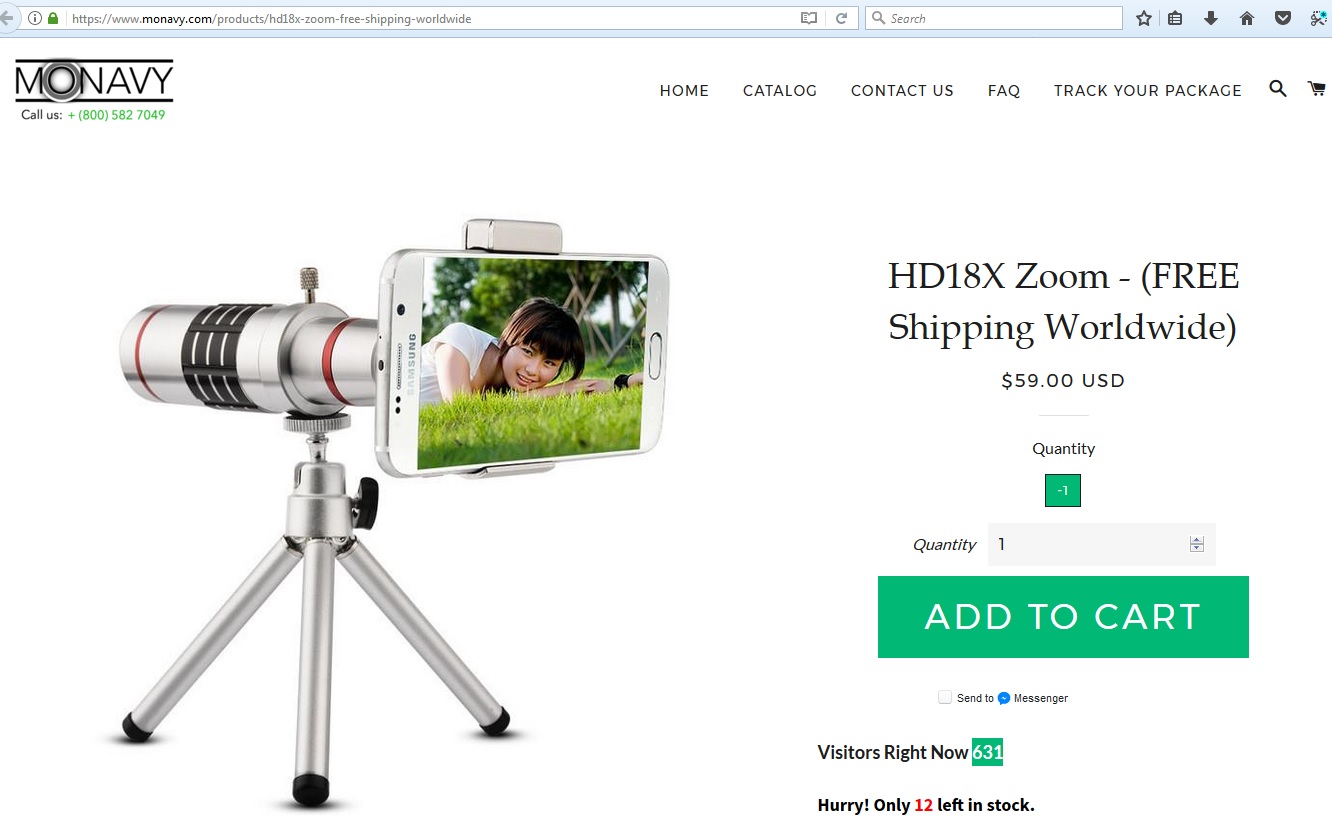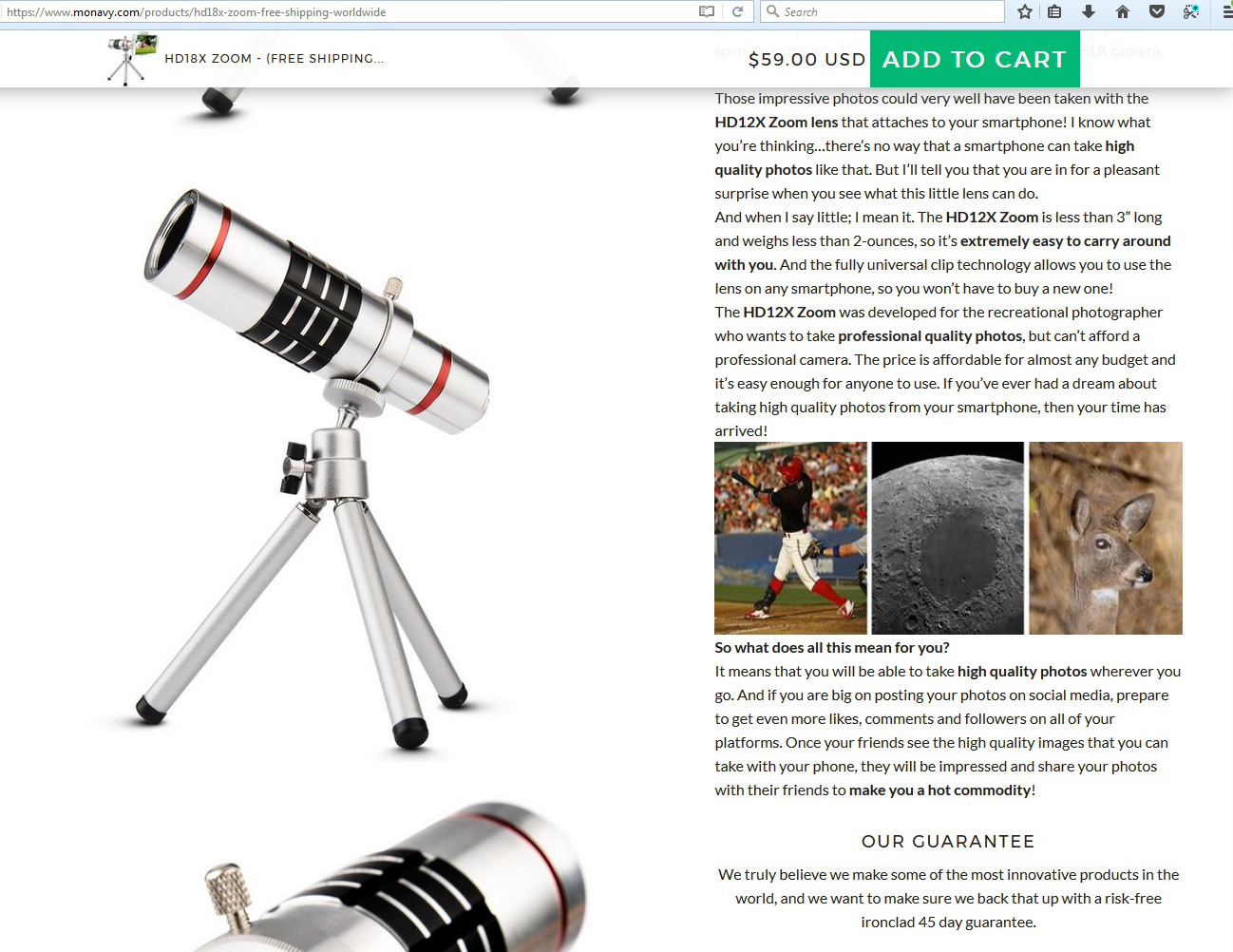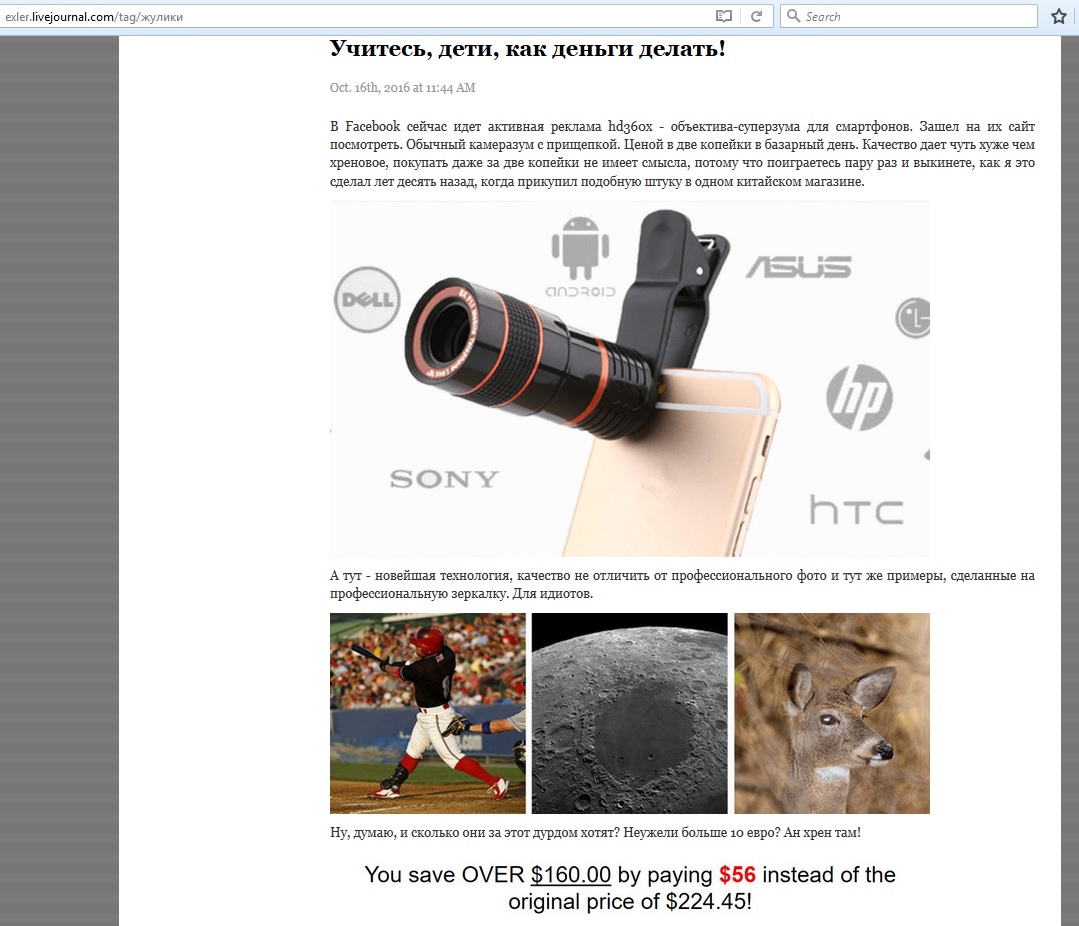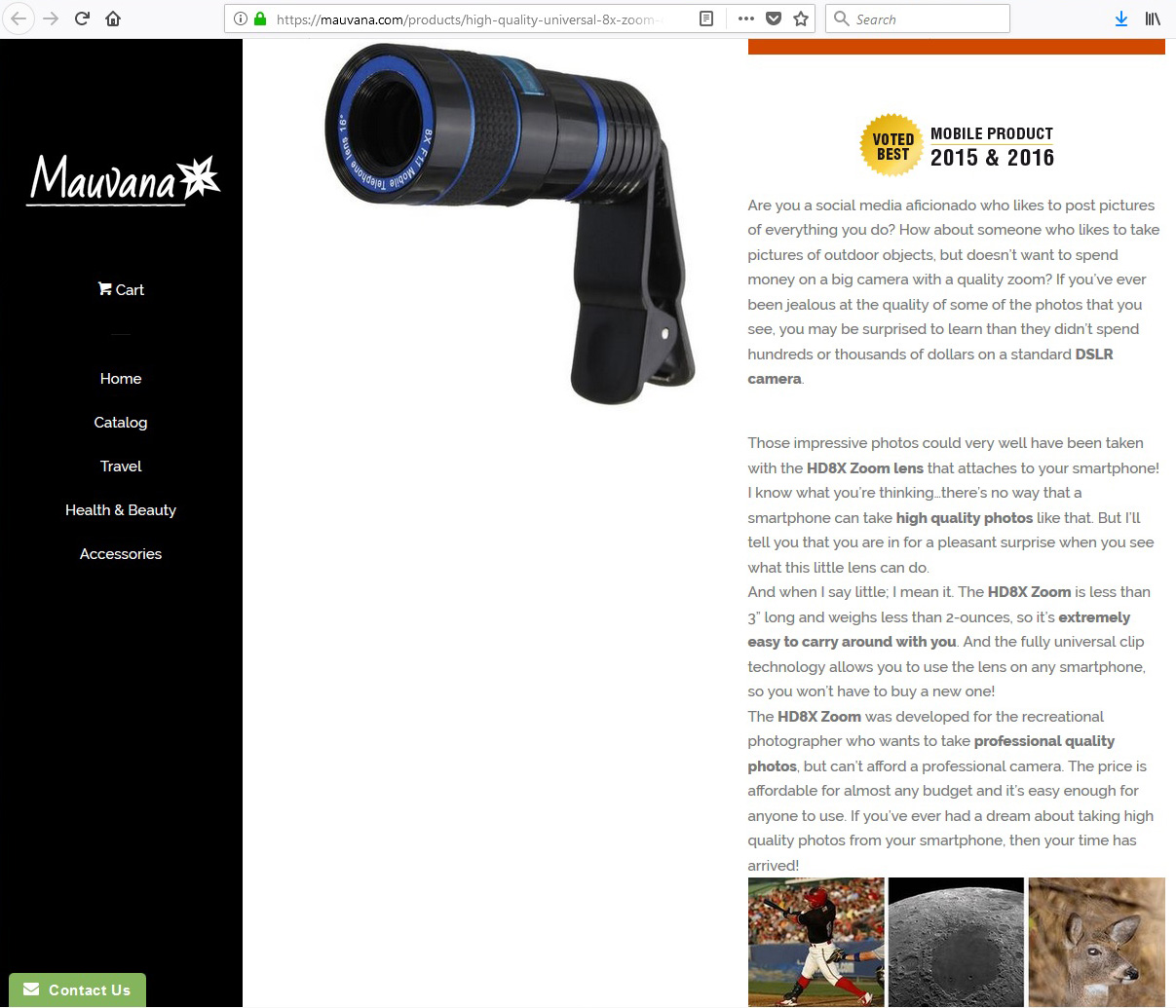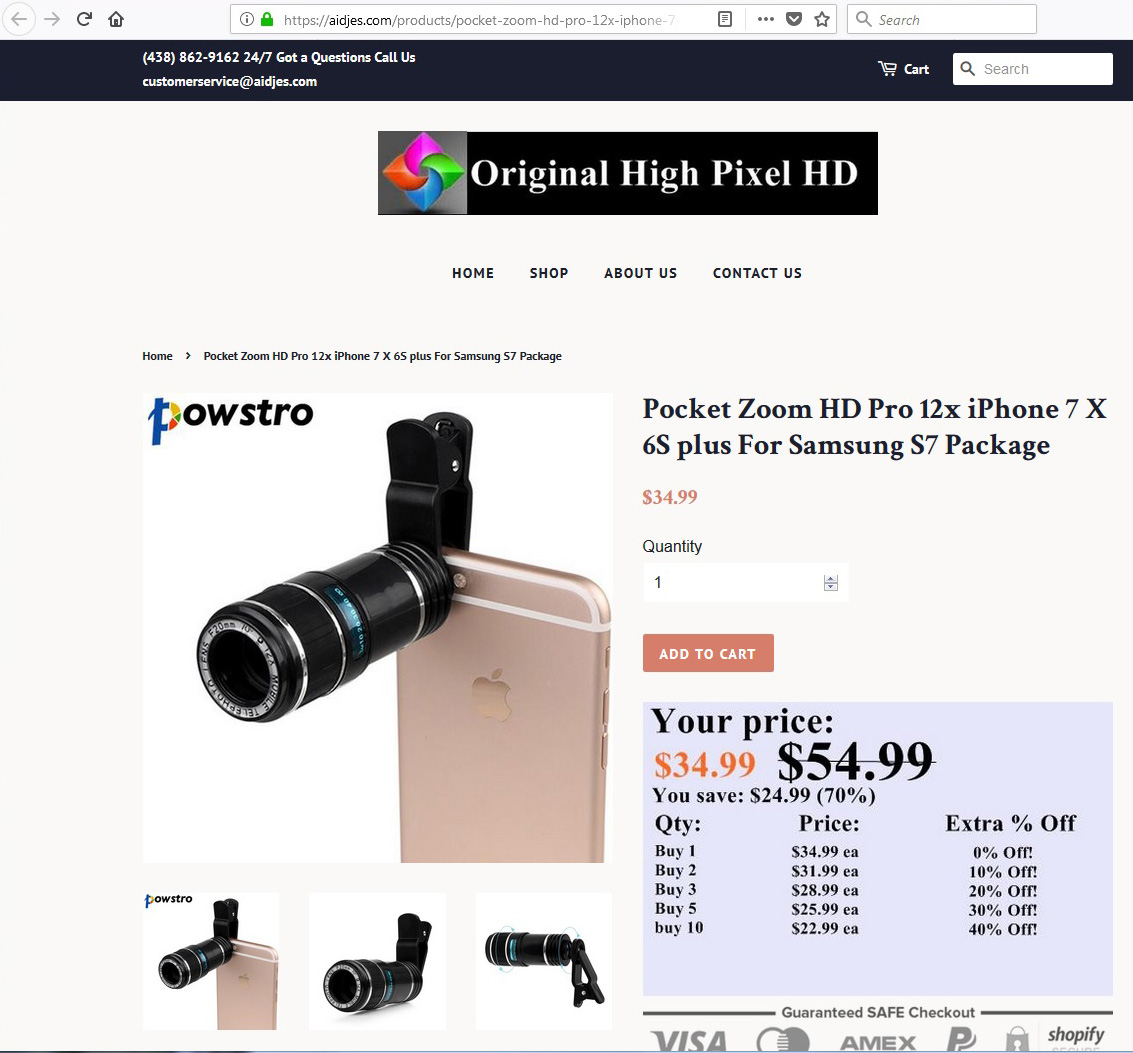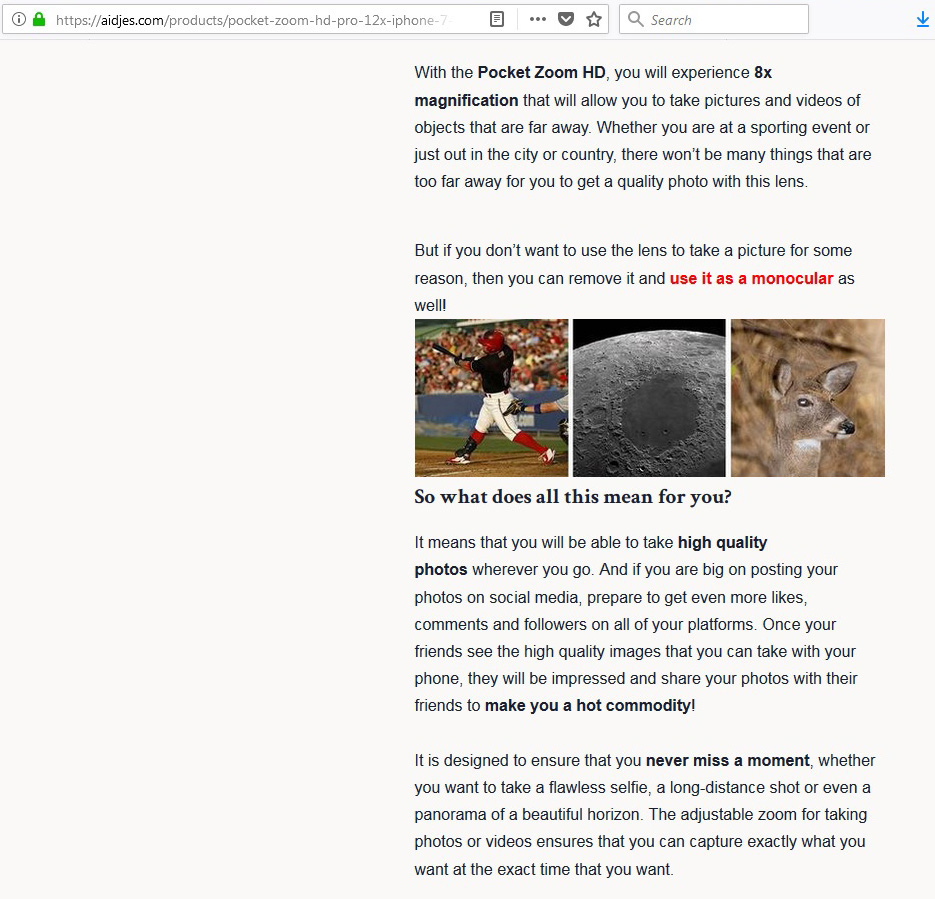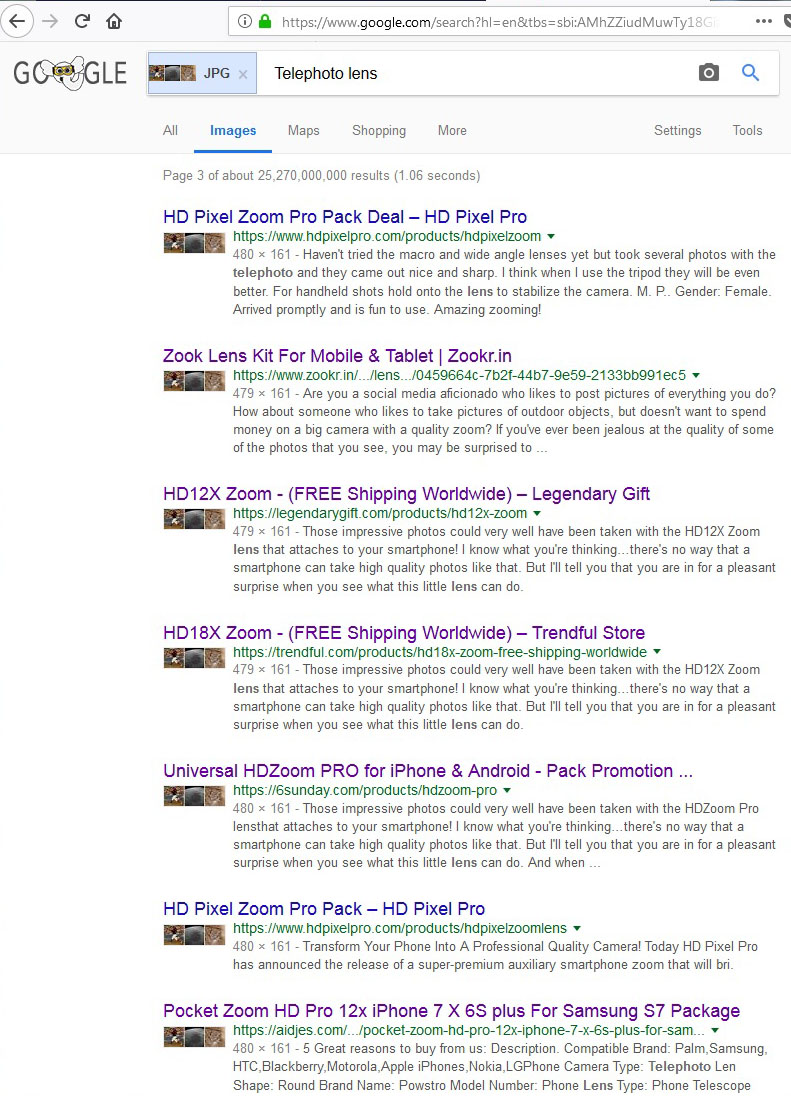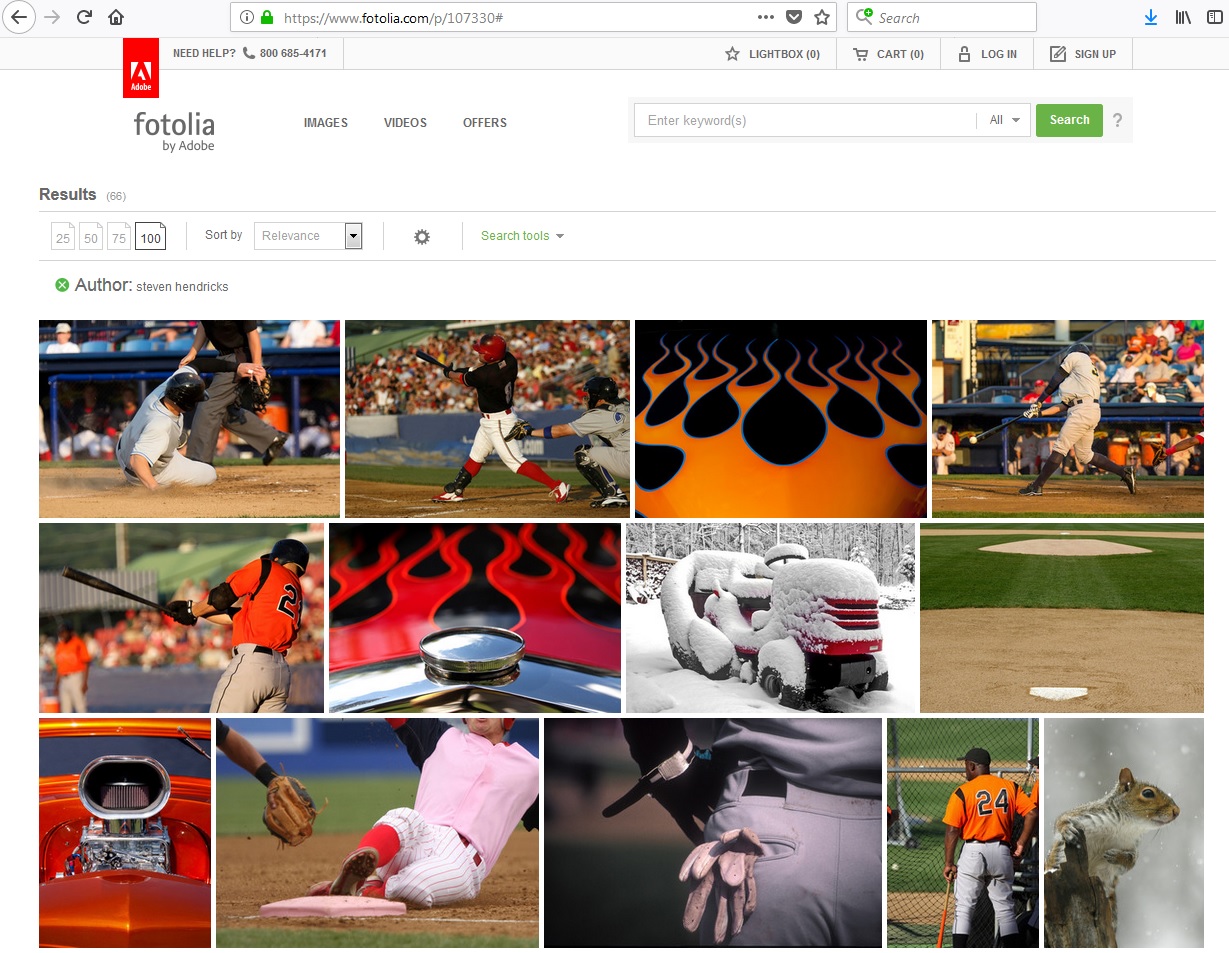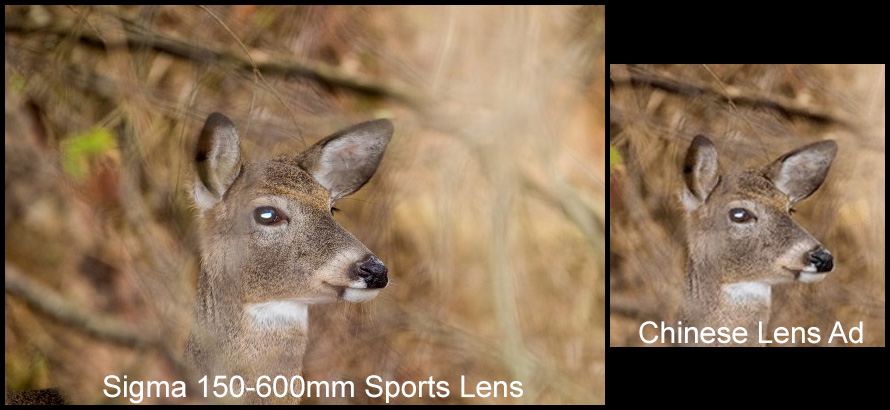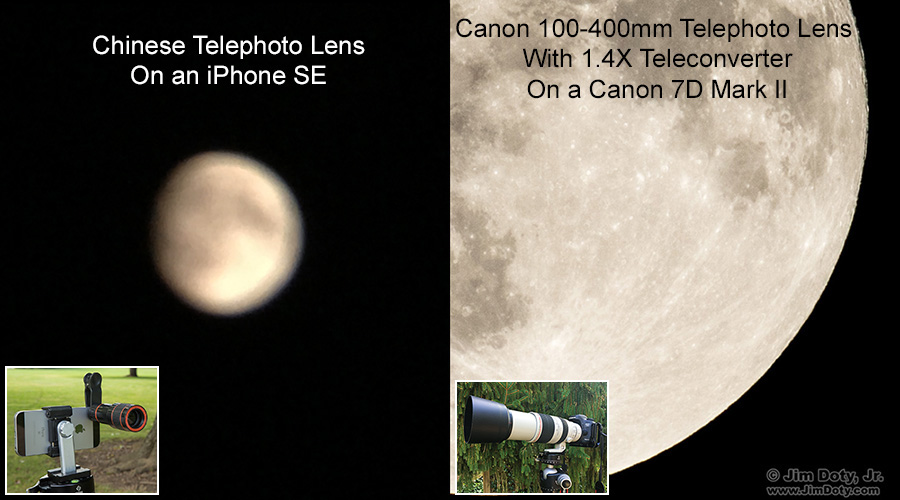You can’t take the same exact action shot with two different lenses. If you see two totally identical action photos taken with two different lenses you should be very suspicious.
 This baseball photo is a case in point. It is a unique moment in time. Only one camera and lens could have created this photo. If a second photographer was right next to the photographer that took this photo and clicked the shutter at the same exact same moment in time, the photo taken by the second photographer would be different because the photographers are shooting from different angles. The edge of the catcher’s mitt would not line up exactly with the stripe of the batter’s pants. The batter’s head would not line up against the same out of focus people in the stands. The photos would be different.
This baseball photo is a case in point. It is a unique moment in time. Only one camera and lens could have created this photo. If a second photographer was right next to the photographer that took this photo and clicked the shutter at the same exact same moment in time, the photo taken by the second photographer would be different because the photographers are shooting from different angles. The edge of the catcher’s mitt would not line up exactly with the stripe of the batter’s pants. The batter’s head would not line up against the same out of focus people in the stands. The photos would be different.
At the Olympic Games and other major sporting events there are places where cameras are mounted side by side. They are fired remotely, some of them at the same moment in time. Even though the timing is the same, the photos are still different. In each photo the foreground subject lines up differently with the background.
So if you see ads for two different lenses using the same exact action photo, you know something is fishy. We will look at some ads that do just that. They all use the same identical set of three photos, including this baseball photo. The lenses in these ads are imported from China and re-sold in the U.S.
HD18X/12X Zoom Lens
In the screen capture at the top of this article, you see the top of an ad by Monavy for the HD18X zoom lens. When you scroll down the page you see the same lens (screen capture immediately above) but it has somehow been renamed the HD12X Zoom lens. Note the baseball, moon, and deer photos. You will see these three photos again.
HD 360X Lens
In this ad at the LiveJournal web site we have an entirely different lens but they are using the same three photos. The lens in this ad is called the HD360X. This lens is sold under a lot of different names on a lot of different web sites. Many of the sites use the same set of three photos to sell the lens. Incidentally, I have tested this lens and it is a piece of junk.
HD8X Zoom
At the Mauvana site this lens is called the HD8X Zoom. It looks exactly like the HD 360XÂ lens above except the orange color has been replaced with a blue color. I bet it is the same lens with a different color scheme, but they gave the lens a different name. Once again we have the same three photos.
Powstro Pocket Zoom HD Pro 12X
At the AIDJES.com site we have another lens, the Powstro Pocket Zoom HD Pro 12X.
If we scroll down the AIDJES ad, we again see the same three photos.
Dozens of Sites Use The Same Three Photos
If you do a Google image search you will find dozens of ads using the same three photos to sell cheap Chinese lenses using lots of different names.
Where Did These Photos Come From?
Since we know different lenses could not take the same exact photos at the same exact moment in time (at least for the baseball and deer photos) where did these photos really come from?
The Baseball Photo
 Here’s another look at our unique baseball photo.
Here’s another look at our unique baseball photo.
The baseball photo used in all of these ads was taken by Steven Hendricks. He sells permission to use his photos via Fotolia/Adobe, a stock photo agency. Here are some of his images. You can see the baseball photo in question in the top row, 2nd from the left. As any professional sports photographer can tell you, these photos were not taken with a cheap Chinese lens on a smart phone.
This is a legitimate use of Hendricks’ baseball photo. It has been cropped to use as an illustration on a web page for the Phoenix Arizona NABA.
The Deer Photo
You know what is coming next. The deer photo was not taken with the Chinese smart phone lens either.
I tracked this photo down to the Sigma corporation photography blog. The original photo was taken with a Sigma 150-600mm Sport lens. I know from trusted online reviews that this a high quality lens (more information here). Since the flash used for this photo is made by Canon, I am guessing they used a Canon DSLR. Other photos in the same Sigma article were taken with a Canon Rebel T3i so that might be the camera they used for the deer image.
You can see the original deer photo about 3/4 of the way down this Sigma blog page. OF course there weren’t two photographers shooting this deer at the same time, one with a 150-600mm Sigma lens, and one with a cheap Chinese lens on a smart phone. I bet someone just grabbed this deer photo without Sigma’s permission and put it in all of these Chinese lens ads. Besides, anyone who has tested these Chinese lenses (and that includes me, see the next section) knows the image quality of these lenses is so bad they can’t take a photo as good as this deer photo.
Lens Test Illustration
I have done several side by side comparison tests of these cheap plastic Chinese lenses. To give you a quick idea how bad these lenses are, this is just one illustration from one of the tests.
I photographed this porta-potty at a distance of 100 yards with a cheap Chinese telephoto lens on an iPhone, and then with a quality telephoto lens on a DSLR.
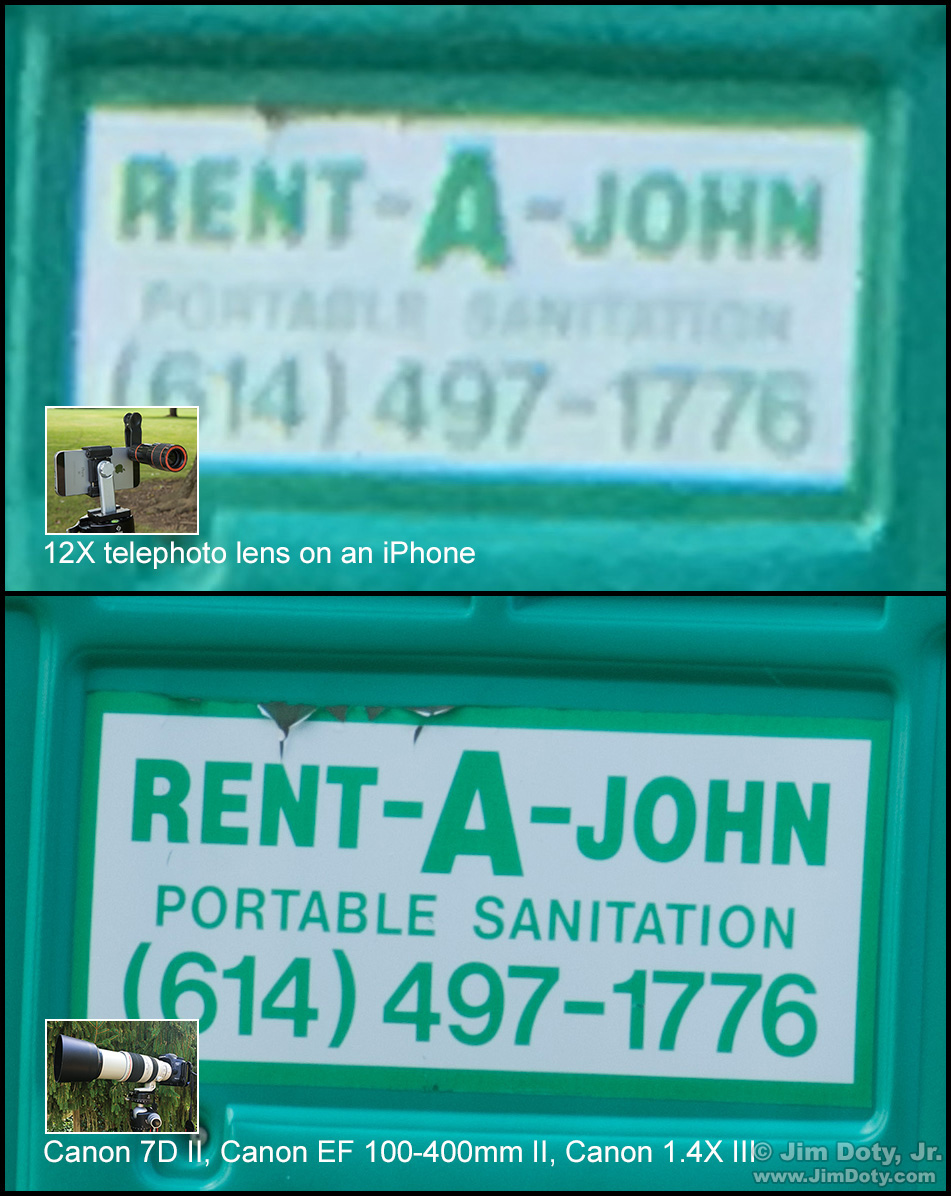
12X Chinese telephoto camera phone lens vs DSLR and zoom lens.
Bottom: Canon 7D Mk II, Canon 100-400mm Mk
II, Canon 1.4X Mk III. File: 170915-7D2-8408.
This is the center of two of the porta-potty photos. As you can see, the quality of the cheap Chinese lens on an iPhone (top) is really bad. The quality of the professional grade telephoto lens and teleconverter mounted on a DSLR (bottom) is really good. You can see the whole lens test here along with more side by side comparison images. I did another test with a different Chinese lens and the results were just as bad. You can see all the tests at the links below.
The Moon Photo
The moon looks the same, month in and month out as it goes through its phases, so it is hard to tell where they got the photo of the moon that is used in all of these ads. But I do know this from my own comparison tests, it is impossible to take a quality photo of the moon with these cheap Chinese lenses. My “Shoot the Moon” comparison test is here.
How Do They Get Away With This?
Since these Chinese lenses weren’t used to take the baseball, moon, and deer photos in all of these ads, how do they get away with posting these photos in their ads? If you read the ads carefully, they never actually say these photos were taken with the lenses they are selling. The ads are just written to give you that impression. Reputable companies use photos taken with the lens they are advertising (like the Sigma blog), so we have come to assume photos in an ad are taken with the lens in the ad. So the dishonest companies take advantage of that assumption.
Stolen Photos
There is another problem and that is with stealing some of the photos that are used in many of these ads. That happens a lot. There are examples of several stolen photos in this article and in this article. I have been tracking down photographers whose photos have been used in the ads for these Chinese lens. Every photographer I have been able to contact told me their copyrighted photos were used in these ads without their knowledge and permission. Using copyrighted photographs for commercial purposes (i.e. to make money) without permission is illegal. (You can use photos with proper credit for non-commercial purposes provided you meet the “fair use” criteria of the copyright law.) So why doesn’t someone sue the people who create these ads? It is hard to sue the people who do this when they are in China and they are just paying someone in the U.S. to mail these lenses out to customers. The person doing the mailing may have no idea what is going on. Their job is just to mail out the lenses. Some of these companies mail the lenses directly from China. That happened to a customer who contacted me to tell me how she got ripped off by ones of these companies who won’t refund her money.
Cheap Chinese Lenses
If this is the first article you have read in this series, here’s the short story on these lenses.
I have done three side-by-side comparison tests with these lenses (links below) and the image quality is lousy.
These lens are purchased in bulk in China for $2 or $3 each and resold in the U.S.
The ads don’t tell you these lenses come from China. That is because some of the ads use a fake, made up German technologist to give you the impression these ads are the result of high quality German engineering.
Honest dealers resell these lens for about $15 on Amazon. They don’t make crazy claims about the quality of the lenses.
Shady dealers re-sell these lenses in the U.S. at ridiculous prices ranging from $30 to $220. They use ads that make outrageous claims for the image quality, with a fake lens comparison test and fake customer reviews. Some customers have been charged double or triple the price they were supposed to pay. Despite claims of free shipping some customers have been charged as much as $85 for shipping. After the initial purchase, some customers have been getting monthly service charges on their credit card from the company that sold them a lens. And finally, customers are having an awful time getting refunds.
The quality of these lenses is so bad and the reputation of the companies who sell them is so awful, they regularly change the names of the lenses and come up with new web sites to sell them just to keep ahead of the bad reviews.
If you are curious (like I was) and want to buy one of these lenses just to see how bad it really is, go to Amazon and buy it from a third party vendor for around $15. Make sure the third party vendor at Amazon has a lot of excellent customer service reviews.
Posted February 3, 2018. Updated February 12, 2018.
Links
Series Overview
The Chinese Lens Rip Off Series – Overpriced Camera Phone Lenses
Series Links
The Chinese Lens Rip Off! Part One
Same Guy, Several Different Names, Several Different Ads, Several Different Products – The fake German engineer used in the Chinese lens rip off ads Â
The Chinese Lens Rip Off! Part Two
The Chinese Lens Rip Off! Part Three
How Many Identities Can One Man Have Before You Get Suspicious? Would you Believe 17? – Another fake German engineer used in the Chinese lens rip off ads.
The Chinese Lens Rip Off! Part Four
The Chinese Lens Rip Off! Part Five. The fascinating story of cheap, Chinese camera phone lenses.
The Chinese Lens Rip Off! Part Six. Video: “Does It Suck?â€
The Chinese Lens Rip Off! Part Seven. Comparison test: telephoto phone lens vs DLSR and zoom lens
The Chinese Lens Rip Off! Part Eight. How much does this lens really cost? $224.50? $2.99?
The Chinese Lens Rip Off Series, Part Ten. Good Luck Trying to Get a Refund
The Chinese Lens Rip Off Series, Part Eleven. The Same Lousy Lens With Many Different Names
The Chinese Lens Rip Off! Part Twelve. Lens Comparison Test Three: “Shoot the Moonâ€
How to Choose the Best iPhone Lenses
More Links
The best lenses for iPhone photography
Apexel Set of Four Camera Phone Lenses – This is the set of lenses I bought at Amazon to get the telephoto lens for this lens test.

